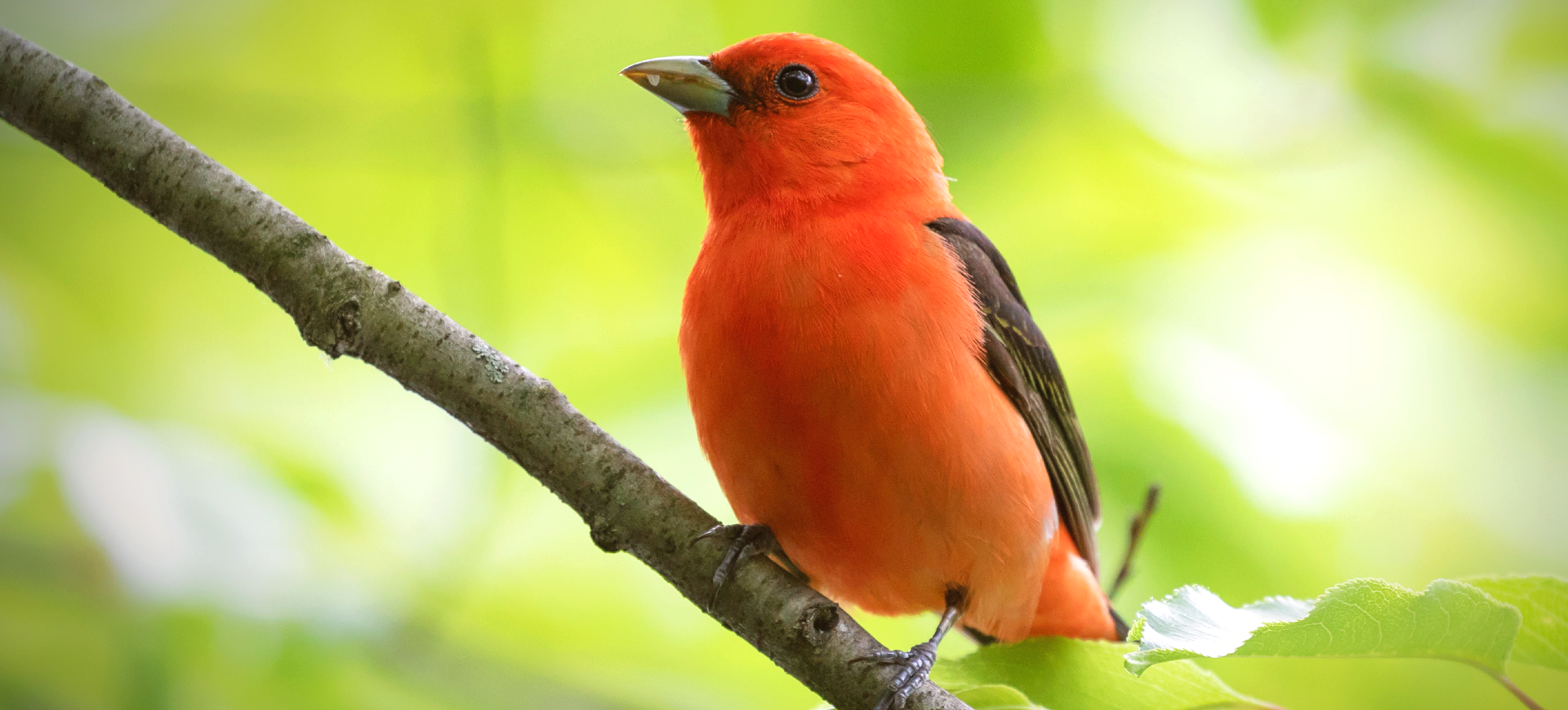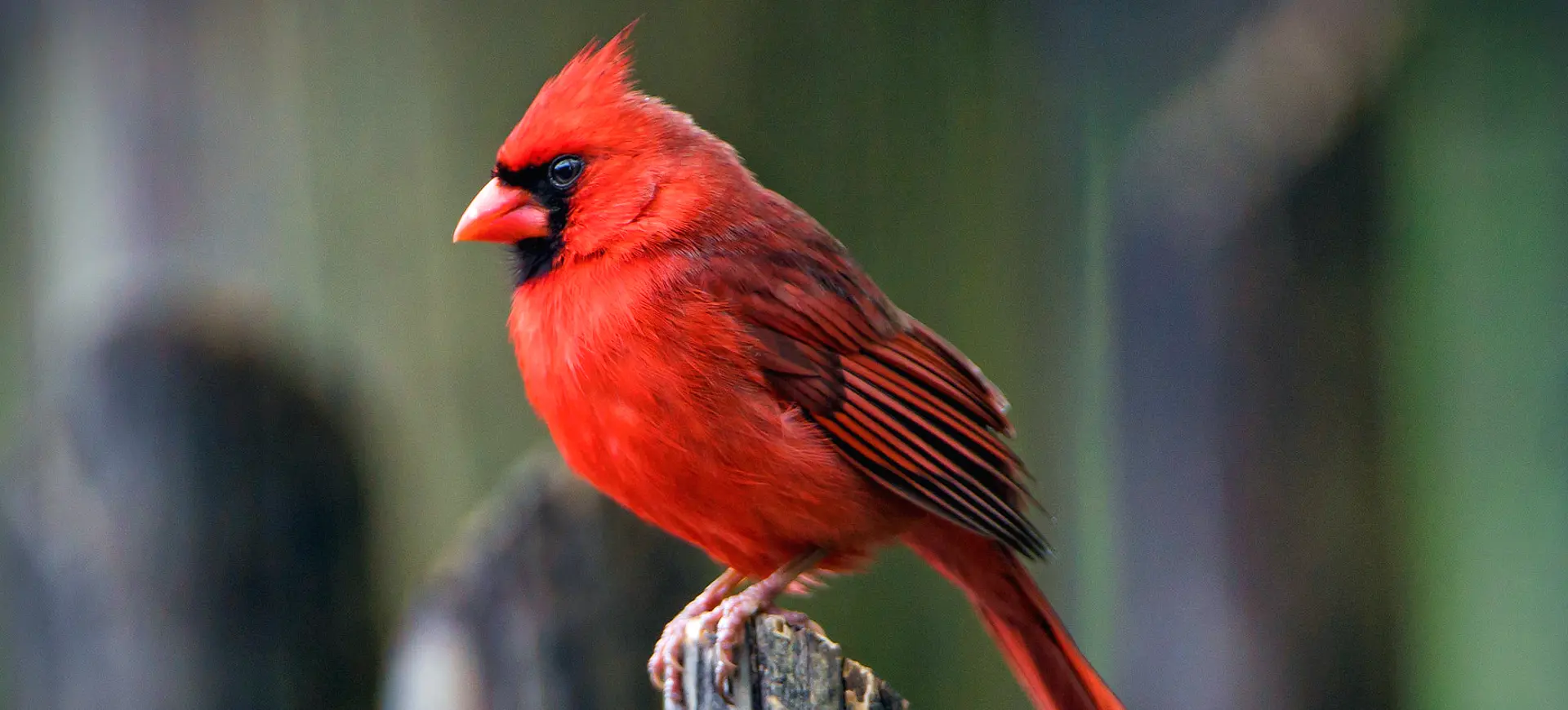Overview
The Rose-breasted Grosbeak (Pheucticus ludovicianus) is a strikingly beautiful songbird known for its bold coloration and melodious song. Males are easily recognized by their black and white plumage with a vibrant rose-red patch on their breast, giving them their name. Females and juveniles are more subdued in color, with striped brown and white plumage resembling a large sparrow or finch. Both sexes have a large, conical beak perfectly adapted for cracking seeds, a diet staple.
These medium-sized birds are admired for their appearance and sweet, robin-like song, often described as a series of musical whistles. Rose-breasted Grosbeaks are migratory, breeding in North American forests and wintering in Central and South America. They are often found in deciduous woods or mixed forest edges, where they can be seen foraging in the canopy or heard singing from prominent perches.
During the breeding season, these birds are monogamous and are known for their relatively egalitarian sharing of parental duties. Both sexes incubate the eggs, and males often take a primary role in feeding the young. This cooperative breeding behavior is somewhat unusual among songbirds and adds to the interest in these colorful and melodic creatures.
Taxonomy
Kingdom
Phylum
Class
Order
Family
Genus
Species
Type
Physical Description:
The male Rose-breasted Grosbeak is known for its striking black and white plumage with a bright rose-red patch on its breast. The back is black, and the underparts are white, with the contrasting red patch standing out vividly. Females and juveniles are more subdued, with streaked brown upperparts and white underparts resembling a large finch or sparrow. Both sexes have a large, conical beak that is pale in color, designed for cracking open seeds with ease.
Adults typically measure around 7-8 inches long, with a wingspan of 11-13 inches. Their robust body and strong beak make them well-adapted to various feeding behaviors, including cracking seeds and snatching insects. In flight, they reveal white patches on their wings and tail, adding to their distinctive appearance. The sexual dimorphism in plumage makes males and females easily distinguishable from each other.

Lifespan: Wild: ~4 Years || Captivity: ~7 Years

Weight: Male & Female: 1.2-1.7 oz (34-49 g)

Length: Male & Female: 7-8 inches (18-20 cm)

Height: Male & Female: 7-8 inches (18-20 cm) in length

Wingspan: Male & Female: 11-13 inches (28-33 cm)
Characteristic:
Native Habitat:
Rose-breasted Grosbeaks are native to a wide range of North America during the breeding season, typically found in deciduous forests, woodland edges, and suburban gardens with ample tree cover. They prefer habitats with a mixture of trees and shrubs, providing feeding opportunities and nesting sites. Their breeding range extends from central and eastern Canada through the eastern and midwestern United States.
During migration, they can be seen in various habitats as they travel to and from their wintering grounds in Central and South America. Their winter habitats tend to be in tropical forests, plantations, and gardens, where they feed on various fruits, seeds, and insects.
Climate Zones:
Biomes:
Biogeographical Realms:
Continents:
Countries:
Diet:
Diet & Feeding Habits:
The Rose-breasted Grosbeak has a varied diet that includes seeds, fruits, insects, and spiders. During the breeding season, they consume a higher proportion of insects, providing necessary protein for the growth of their young. Their large, powerful beak is perfectly adapted for cracking open seeds and snatching insects from foliage or mid-air.
These birds are often seen foraging in trees and shrubs and on the ground beneath feeders, where they are known to feed on spilled seeds. They are particularly fond of sunflower seeds, which they can deftly crack open with their strong beaks. Their feeding habits contribute to the control of insect populations, making them beneficial to the ecosystems they inhabit.
Mating Behavior:
Mating Description:
Rose-breasted Grosbeaks are monogamous during the breeding season, forming pairs that share in raising their young. Courtship involves the male singing to attract a mate and sometimes performing flight displays. Once paired, the couple engages in mutual preening and feeding, strengthening their bond.
The female builds a loose, cup-shaped nest in a tree or large shrub, where she lays 3 to 5 eggs. Both parents share in incubating the eggs, which hatch after about two weeks. The male often primarily feeds the chicks, while the female starts the second brood or assists with feeding. The young leave the nest about two weeks after hatching but remain nearby and are fed by their parents for several weeks.
Reproduction Season:
Birth Type:
Pregnancy Duration:
Female Name:
Male Name:
Baby Name:
Social Structure Description:
Outside the breeding season, Rose-breasted Grosbeaks are relatively solitary, though they may form loose flocks during migration. During the breeding season, they are territorial and monogamous, with pairs forming strong bonds. Their cooperative breeding behavior, with both males and females sharing in the care of the young, is notable among songbirds.
Communication includes a variety of vocalizations, with the male’s song being particularly melodious and distinctive. Visual signals, such as postures and movements, are also used, especially during courtship and territorial displays.
Groups:
Conservation Status:
Population Trend:
Rose-breasted Grosbeaks are considered to have a stable population overall, with no immediate widespread threats identified. They are widespread in their breeding range and are a familiar sight at feeders and suitable habitats. However, like many migratory birds, they can be affected by habitat loss and fragmentation, particularly on their wintering grounds.
Monitoring efforts are essential to track population trends and understand the impacts of environmental changes. Their presence and health are indicators of the health of the forest ecosystems they inhabit.
Population Threats:
The main threats to rose-breasted grassbeaks include habitat loss and fragmentation, particularly on tropical wintering grounds, where deforestation is a concern. Collisions with buildings and other structures during migration can also cause mortality. Pesticides and other pollutants can affect their food supply and health.
As with many migratory species, climate change poses a long-term threat by potentially altering their migratory patterns and food availability along their migratory routes. Conserving their habitats and ensuring safe migratory pathways are crucial for the long-term health of their populations.
Conservation Efforts:
Conservation efforts for roasted grosbeaks primarily focus on habitat protection and restoration, ensuring access to suitable breeding and wintering grounds. Protecting migratory stopover sites is also important, as these are critical refueling points on their long journey. Efforts to reduce window collisions, such as making windows more visible to birds, can help reduce mortality during migration.
Research and monitoring are ongoing to better understand their ecology, migratory patterns, and the impacts of environmental changes. Public engagement and education about the importance of conserving migratory birds and their habitats play a crucial role in conservation efforts.
Additional Resources:
Fun Facts
- The Rose-breasted Grosbeak’s song is often described as a sweeter, more musical version of the American Robin’s song.
- They occasionally hybridize with the closely related Black-headed Grosbeak, where their ranges overlap.
- Despite their bright coloring and loud song, these birds can be surprisingly difficult to spot in the dense foliage where they prefer to stay.
- In addition to seeds and insects, they have been known to eat fruit, including bananas and oranges, especially on their wintering grounds.
- The male’s vibrant breast coloration can vary in intensity, with some individuals displaying a deep, almost purple hue.
- They have a relatively slow, deliberate flight compared to many songbirds, which, combined with their size, can make them appear almost hawk-like from a distance.
- The Rose-breasted Grosbeak is one of the few bird species where the males help incubate the eggs and feed the young.
- They are popular among birdwatchers and are often a sought-after sight during their spring migration.
- Male Rose-breasted Grosbeaks are known for their striking black and white plumage with a vibrant rose-red patch on their breast, which can vary in intensity among individuals.
- They are notable for their egalitarian approach to parenting, with both males and females sharing responsibilities for incubating the eggs and feeding the chicks.













